YOUR CART
- No products in the cart.
Subtotal:
$0.00
BEST SELLING PRODUCTS
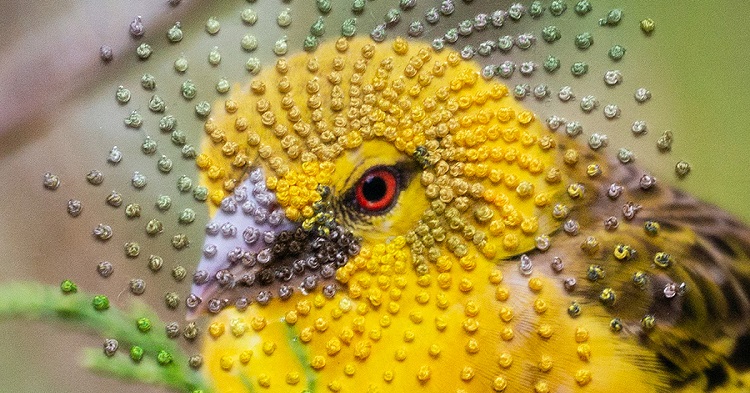
Combining photography with stitch was not something that Liz Jeary had ever thought about until, in her thirties, she took a photography degree which introduced her to the idea of painting and stitching into her images.
Liz had previously pursued a range of careers but knew all along that only something that included photography would satisfy. A number of workshops and then a full-time degree later, and, still, something was missing – until she added stitch. Liz had the creativity and ideas: the camera, the needle and the thread provided the outlet.
Though she freely admits that, as a child, she was not a photographic prodigy and was never much good with a needle and thread, it was upon seeing the connection of the two historical processes that the alchemy was created. Her first stitched photograph was a success and she never looked back.
Today, Liz is an exhibited and commissioned photographic artist. She told us about major life changes, how her passion carried her through and how she finally mastered French knots.
Tell us about your life and career before you became a photographic artist. What prompted the change?
Liz Jeary: I’ve had many careers before this one. I have been a retail manager, a freight forwarder, a lettings administrator, and a local government communications/PR officer. All of them provided me with skills and experience that I can lend to my current practice, and my enjoyment of exhibition curation, but none afforded me any creative outlet.
As much as I was encouraged to be creative as a leisure activity, I always felt that the only job I would ever really enjoy would be one that was somehow related to the photographic industry.
Turning thirty seemed to trigger an existential crisis, and I realised that I needed to pursue photography as more than just a hobby to find some life satisfaction. This was quite a big move, and included ending a six-year relationship, moving cities, and navigating being a student with very different life experiences to most of my course peers, some of whom were considerably younger. I was very fortunate to have had experience of living on a tight budget, so was able to focus purely on my studies, rather than take on a part-time job that would inevitably interfere with my efforts and the outcome of the course.
Throughout the course we were exposed to and encouraged to get involved in many different photography fields and experiences. I immersed myself in fashion and portraits, collaborating with a fashion designer to rebrand her line, and attending London Fashion Week to shoot in the ‘pit’. I also took on some jobs shooting weddings and events, which not only gave me great experience but also some much-needed money.
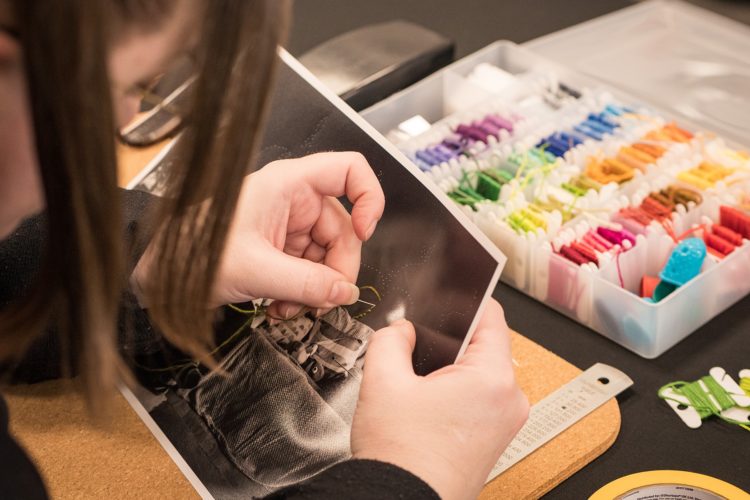
What inspired you to start stitching onto your photographs?
I began in the final year of my degree. I was excelling at all the set projects in text and in images, and yet I wasn’t satisfied with the work I was producing. It was suggested to me that I consider what photography means to me, so I went back to being eight years old, armed with that first camera, and recalled the thrill of holding in my hand the physical results of what my eyes had seen. The printed photographs meant the world to me.
I started experimenting with printing my images onto different surfaces, like wallpaper, but had mixed results, and although I was hand-feeding the papers into the printer, I wanted to be more connected to the process. Research led me to the world of physical photograph manipulation, both using film and digital images.
I’d never been very successful with needle and thread, despite my mother’s attempts to get me to sew, but there was something about the permanence and connection of the two historical processes that excited me. When my first attempt at a stitched photograph was a success, I knew I had found something that felt right for me.
Now I use various embroidery techniques and keep learning new styles through experimentation (and hope!), but I always do it by hand.
In those early days I recall being really drawn to French knots but I had absolutely no idea how to do them. I consulted an ‘embroidery bible’ I had picked up in a charity shop but, much as I tried, I just couldn’t understand the diagrams. A few YouTube videos later and I endeavoured to give them another go – and I finally got it! Chop Suey was my first attempt. I can’t say that they are ever perfect (perhaps the odd one) but I really enjoy doing them – and the outcome.
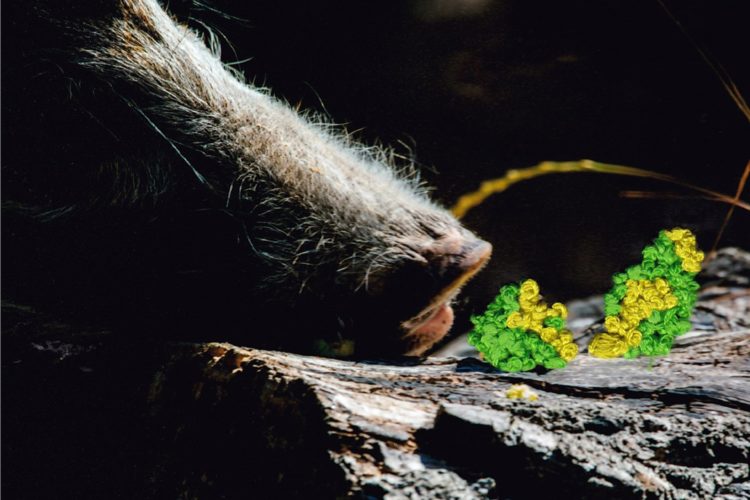
I now feel like I have been stitching photographs for so long that all images I produce have the potential to be stitched. For me, this means that a photograph is not ‘finished’ until I have added some embroidery. It gives me a physical connection to the image and is very therapeutic – the action of pulling the thread through the print confirms that it is a physical item. There is also a connection to the tradition of hand finishing photographs and to the history of needlework – in modern times (such as family members), as well as much further back.
What are you hoping to achieve in your work?
I view my images as blank canvases, a starting point to be enhanced with embroidery.
There is a part of my imagination in every image. This could be an abstract thought, a humorous observation, or the memory of an experience. Although this is what I aim to express, it’s not meant to restrict how the images are received – I’m happy for viewers to have their own interpretations.
The images themselves are the main catalyst for deciding how to proceed with embroidery, but I can also be influenced by other factors, such as music, cultural experiences, people and shapes. I love unusual faces and seeing them in print inspires me to creatively react. My emotions also come into this – happier times will result in more whimsical pieces. Turbulent times often produce darker or more poignant outcomes.
Choosing the style of embroidery really does come from the photograph. If I can envision an outcome then I will give it a go, not always successfully, but I’ve not had too many failures. Having a pre-planned idea of what I’m going to stitch ensures that I don’t overdo it. I find that I’m able to stop, assess, and then decide if it needs more. There is no ‘undo’ with this, so each pull of thread has to be intentional.
The embroidery must make sense to me, it must relate to and enhance the image, and not be a distraction or cover-up for a poor image.
I also pull in references from artists known for their use of geometric form, such as Piet Mondrian. During research for one of my degree modules, I discovered some of his earlier work and was amazed to find he’d also produced some more traditional and detailed paintings.
Seeing his progress, from these to the lines and colour blocks for which he’s most widely known, made me see the impact of simplification, which I now apply to my own work.
My first attempt at ‘photobroderie’ was using single lines to make shapes on some portraits. I didn’t find the outcome particularly pleasing and assessed that it was due to the simplicity, rather than understanding how the stitching did or didn’t relate to the photograph. My BA final project resulted in my stitching of eight robots that my friend had illustrated – for a novice embroiderer this was not only time consuming at eight hours per piece, but also resulted in some quite rudimentary results.
Having gained more experience, I now consider how complex the embroidery actually needs to be, or rather doesn’t … less is more rings true for me. Some of my favourite pieces have geometric shapes or single lines of white thread.
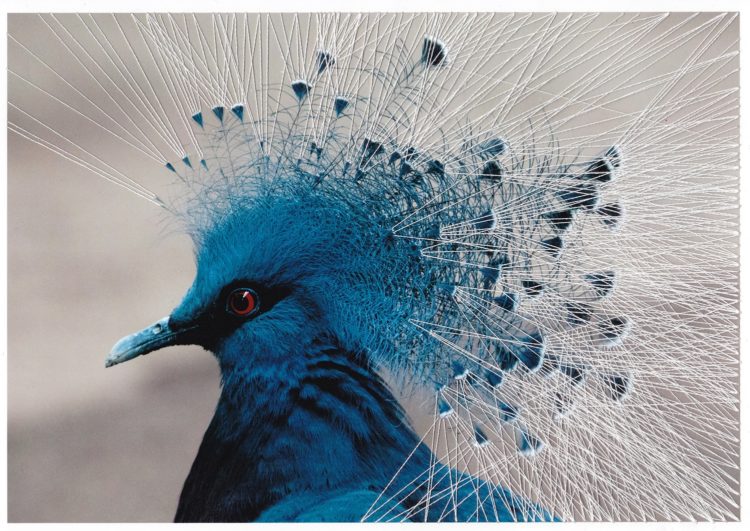
Tell us how you create your work and how you get ideas – is it planned or spontaneous?
Because there is no undo, and I generally have to make the holes in advance, the stitching tends to be planned. There are exceptions to this, such as French knots – I find that I can be quite spontaneous with the placement of these as they only require two small holes each.
Some images I use are from planned photoshoots for which I’ve developed a concept, while others come from everyday images that I take at my leisure. Planned shoots are usually born from a single flash of inspiration, perhaps a song or current affair, which I will then develop into more of a concept.
This will usually lead to how I will apply the embroidery but sometimes can purely be focussed on the photographic outcome, with ideas for the embroidery given time to evolve. This can lead to long periods of the images not being used, but then it feels more organic when the inspiration does come. I have some images that are untouched from a concept I started three years ago!
Other images may come from leisure activities, such as visiting zoos or days out. I don’t take these with the intention to embroider them, but will inevitably see something in them that inspires me to stitch. I see characters in animals, as we do with people. Their behaviours, expressions, and natural actions, such as eating habits, will always inspire me to stitch something relevant to them, such as Late Lunch. It can also lead to a more abstract image, such as Land of Confusion.
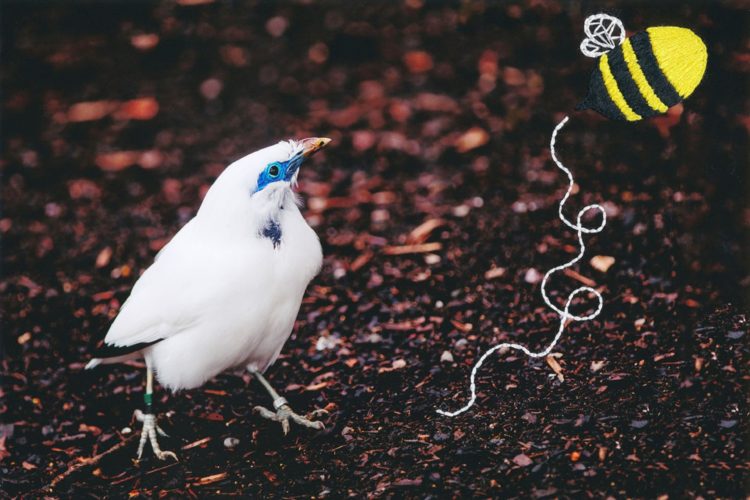
I create some images for specific purposes, such as competitions that are purely photographic. I approach these in the same way as concept shoots but not solely with the intention of embroidering them. However, it is inevitable that I will revisit them at some point, looking to see how I can apply my embroidery, as, to me, this is how I finish a piece of work.
What would you say to our readers who may want to combine photography and stitch. Do you have any tips and techniques?
I would advise not to rush! My very first embroidered image took eight hours. It was quite intricate, and I don’t recommend starting with something like that, so perhaps keep it simple to start.
Be aware that photographic paper is very different to other fabrics and can tear very easily, so having a plan and creating holes in advance is the best way of starting out. You can certainly try freehand stitches but be prepared to reinforce the back of the print with tape: that will help stop holes from bleeding, but it does make it harder to stitch through (the needle can also get a bit sticky). I’ve been very fortunate (considering I’m a bit of a clutz!) in that I’ve only ever ruined two prints with hole bleeds, but I always have spares just in case.
It’s always a good idea to have multiple copies of the print, and never use an original photograph that is valued or not able to be duplicated, unless it is a found photograph and not sentimental to you. Lots of people buy old family prints at vintage shops and flea markets.
I really enjoy the repetition and neatness of back stitch, and how it is very apparent as sewing, rather than being a post-processed digital effect. Thread painting (as in Jeux sans frontiers) is something I’m keen to get better with as I get a real kick out of it – the slight spontaneity is very contrary to my usual approach but I think the outcome is cool.
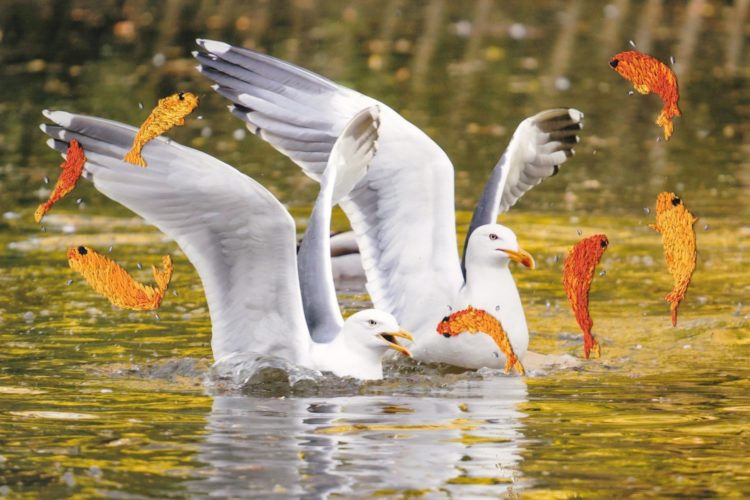
When it comes to thread selection, I tend to buy in bulk. I don’t have any particular brands or sellers, as I’ve found some of the better known brands are actually harder to work with. If the thread is too smooth it can be hard to keep each pass in place, which can result in unwanted knots. Buying unbranded can be problematic also, such as running out of a particular colour and then not being able to match it.
The most useful tool I have is a homemade awl – it’s a prosecco cork with a fine needle. There are obviously pre-made awls on the market but I find these do not have a fine enough tip to make small holes.
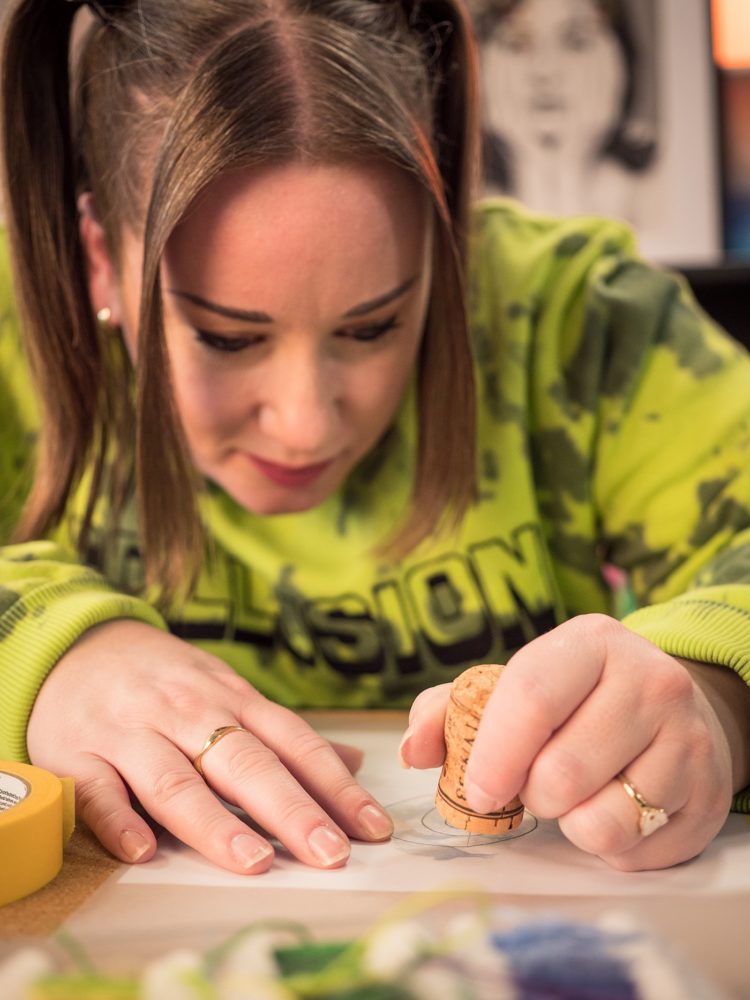
I see that your favourite singers Kate Bush and David Bowie have inspired your work, along with your other loves of kimonos and parrots.
Music has always been a huge influence in my life, and most definitely in my photographic practice. Kate Bush and David Bowie are my heroes, and I feel a strong affinity with their music and lyrics. They were the first singers I was aware of as a child and their voices and music have stayed with me ever since. Six-year-old me didn’t understand the complexity of their lyrics, so my imagination always visualised them in a very literal way. This still translates into my images, such as the Suspended in Gaffa series (from the Kate Bush song of that name), and lots of singular photographs, such as Golden Years and Speed of Life (from David Bowie’s songs).
The other love in my life is birds – that’s nearly all birds but I have a special connection with the psittacine species which is parrots. This probably started with my nan’s Amazon parrot, Trampy, who was a rescue bird, and very much a naughty boy. He didn’t seem to like women very much, including my nan, but he was very accepting and affectionate towards me.
I’ve had a few of my own pet birds, including Ludo, a green Pacific parrotlet. He was smaller than a budgie but had the personality and intelligence of a much larger parrot. He was my muse and I photographed him every single day of his life, sharing the images with his many followers on Instagram. Most of my animal images are of birds.
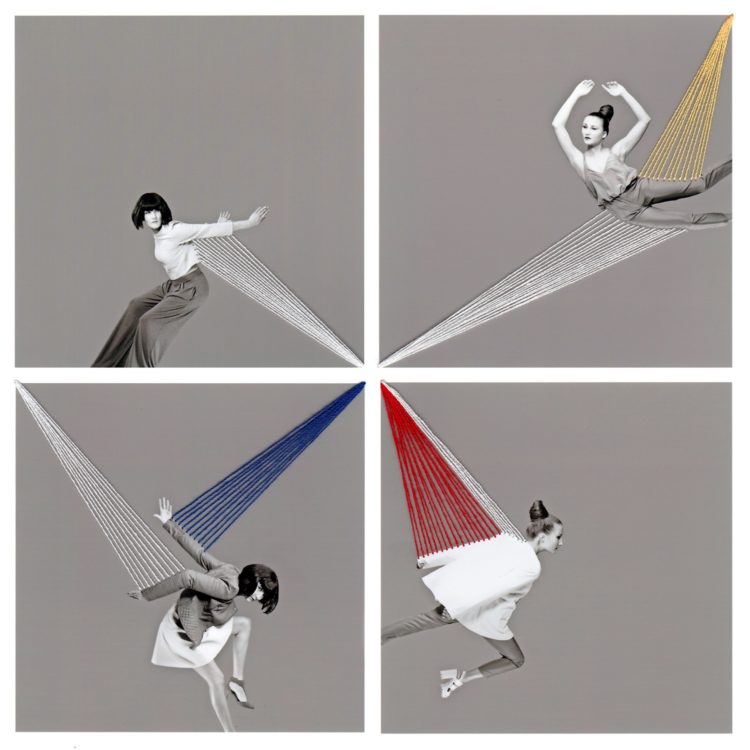
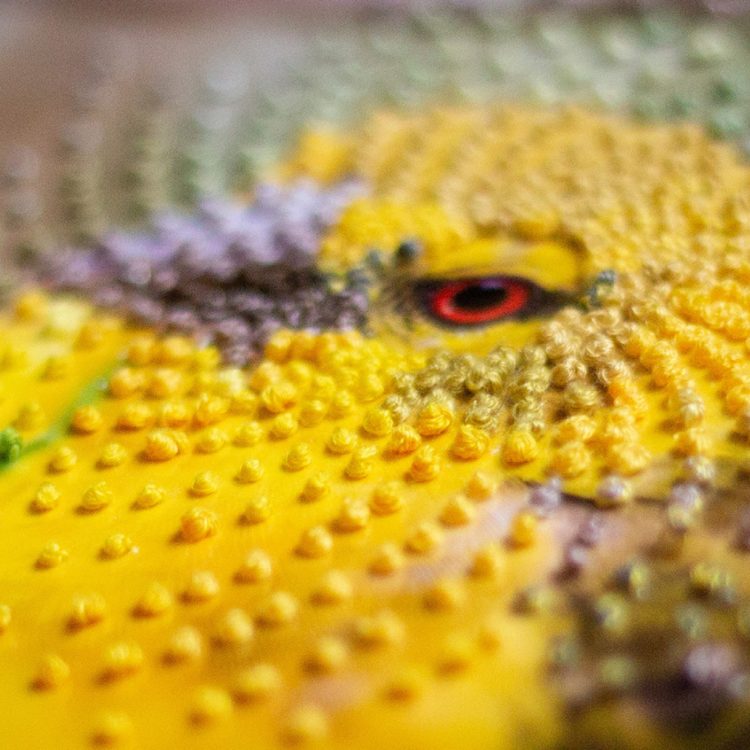
Your website and Instagram describe your work as fine art and experimental. Can you elaborate on that?
I create my images with the vision of seeing them hanging on a wall, either in a gallery setting or in a private residence. They are not for commercial purposes, and exist in their own right, as my own creations. Some people like to separate art and photography, but to me they are not mutually exclusive, and my practice is as a photographic artist, not just a photographer.
Stitching my images allows me to take my artistic vision further. It encourages me to think outside of the box and reach further into my creative wheelhouse. Some of my choices are most definitely experimental, so I get a real buzz when something new works out well.
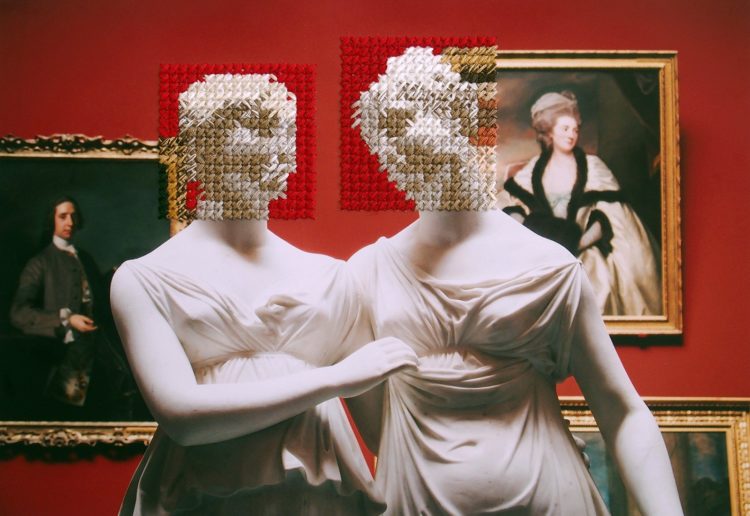
Tell us about the camera and equipment you normally use and why you chose those?
I mostly use full-frame Canon DSLRs and professional lenses but also have lots of old film cameras, and some cool compacts for when I need to keep kit light.
Most people have cameras in their pockets that are quite capable of capturing some great images. For me, mobile phones will never replace a real camera as they have such limitations, but they have their place in everyday life. I can’t say I’ve ever captured an image with my phone that I would want to stitch but that could be because I have only ever used it for snapshots.
A phone did have its moment in my //Par//Mcr project. I chose it that time for the low-fi quality to match that of my collaborator, Christophe Dillinger, who used a ‘toy’ Diana film camera.
What are you working on at the moment?
I’ve recently completed a commission for Wilkinson cameras, the store where I work, and my closest friend, Nigel Heather who is an incredible line artist and painter, has asked me to curate an exhibition for him.
The pandemic took away a lot of opportunities to exhibit and sell my work, and create new images, as it wasn’t safe to visit certain places or get people into my studio. So I’m now starting to plan shoots again and build a catalogue of images I can work on when inspiration hits.
My work has progressed to larger and more complex pieces, and I would like this to continue. Scale is the biggest physical challenge, as, when I stitch, I have to flip the print over and back, rather than stab from behind, to ensure the needle goes into the correct hole. The larger the print, the harder the application of the stitch. My challenge is to see if I can do this and still keep the stitching impactful.
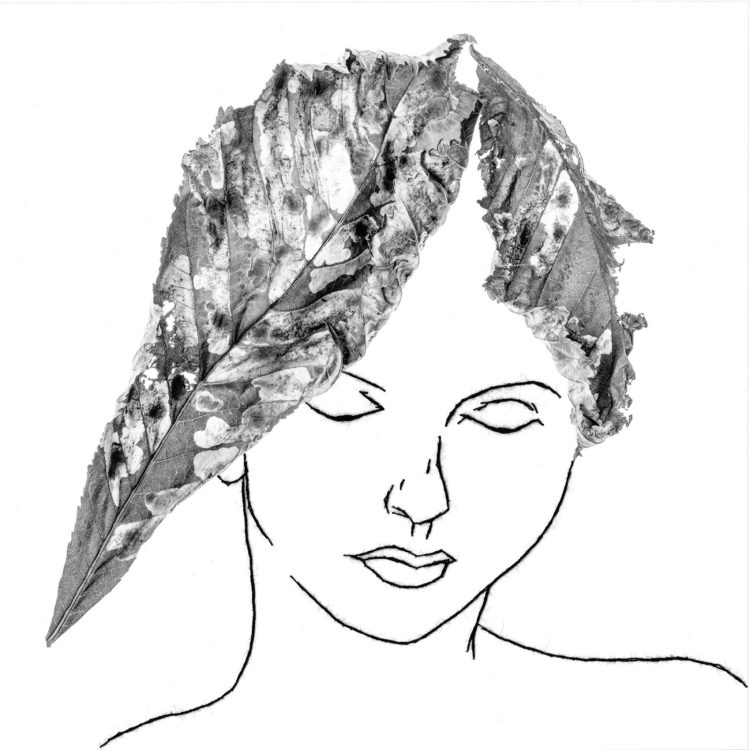
If you’re considering stitching into photographs, Liz has a few recommendations to ensure success:
Liz Jeary grew up in Bristol and graduated from the University of Salford in 2014 with a First Class BA Hons Degree in Photography. She now lives in Birkenhead on The Wirral and, in addition to her embroidery work and photography commissions, works as an assistant manager at Wilkinson Cameras, an independent photography retailer in Liverpool, Merseyside, UK.
Liz has taken part in exhibitions including Square Pegs in Birmingham in 2014, and the Warrington Contemporary Open in 2020, and her work has been sold at Liverpool Art Fair.
Her Suspended in Gaffa series was commissioned by Square Magazine to add to their permanent collection and has also been exhibited in the magazine editor’s gallery in Chamboutriere, France. One of her robot degree pieces hangs in the Dublin head office of a prominent multimedia company and her private commissions are in Venezuela, USA, and Australia.
Website: lizjeary.co.uk
Facebook: Liz Jeary Photography
Instagram: @lizjearyphoto
If you’re interested in other artists who embroider photographs, take a look at our interview with Melissa Zexter, or Erling Helling-Larsen who stitches onto magazine pages.
Has the combination of photography and embroidery stimulated you to combine these techniques in your own practice? Let us know in the comments below.